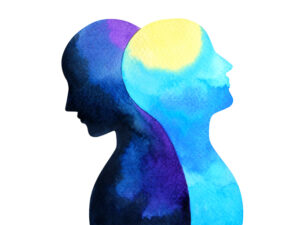
American youths are increasingly struggling: Suicide-related diagnoses in children and adolescents increased 14% since before the pandemic, a new analysis shows. This age group accounts for 35% of all Americans with these diagnoses.
The report was published Wednesday by Evernorth, a subsidiary of Cigna. The company relied on commercially-insured customer data to conduct the analysis. The study population included 31,698 unique customers, including 27,729 diagnosed with suicidal ideation and 3,969 diagnosed with a suicide attempt.

With the Rise of AI, What IP Disputes in Healthcare Are Likely to Emerge?
Munck Wilson Mandala Partner Greg Howison shared his perspective on some of the legal ramifications around AI, IP, connected devices and the data they generate, in response to emailed questions.
It found that for those aged 17 and under, the rate of increase in suicidal ideation was 21% from 2020 to 2021. Comparatively, the rate of increase was 3% for those aged 18 to 25 and 3% for those aged 26 and older.
Additionally, the rate of increase in suicide attempts among adolescents was 26% from 2020 to 2021, compared to 5% for those in the 18 to 25 age bracket and 3% for those aged 26 and older.
“We know kids have been struggling,” said Dr. Stuart Lustig, national medical executive for provider partnerships at Evernorth. “We know they’ve been struggling academically. They’ve been struggling with loneliness and social isolation. A lot of kids have [felt the impact] of the pandemic on family members, job losses, separations, deaths. Then all of this in the context of racial profiling.”
Female and Asian/Pacific Islander youth are especially struggling, the analysis also found. The rate of increase in suicidal ideation for female adolescents was 26% from 2020 to 2021, and the rate of increase in suicide attempts was 33%. Males had a 12% rate of increase in suicidal ideation and a 6% increase in suicide attempts.
Asian/Pacific Islander youth had higher increases of suicidal ideation and suicide attempts than other races. The rate of increase for suicidal ideation in this group was 43% from 2020 to 2021, compared to 27% for Black adolescents, 27% for Hispanic adolescents and 19% for White adolescents. The rate of increase for suicide attempts was 39% for Asian/Pacific Islander youth, compared to 10% for Black youth, 33% for Hispanic adolescents and 26% for White adolescents.
While Asian/Pacific Islander youth had the largest percentage increases in suicide-related behaviors, they only represented 3% of adolescents with suicidal ideation and 5% of those with suicide attempts in 2021. White youth, comparatively, represent 80% of suicidal ideation diagnoses and 79% of attempts.
The report also found that youths showing signs of suicide-related behavior are more likely to have serious health conditions, such as ADHD or autism. Of those diagnosed with a suicide attempt in 2021, 87% used healthcare services within three months before the event.
“Given that a majority of youth who attempted suicide received some form of health care prior to the event, there is significant opportunity for clinicians to help avert a possible crisis with routine screening and family engagement,” the report said. “Clinicians can intervene by helping parents and guardians have conversations about suicide with children at risk.”
These findings are a “call to action” for healthcare stakeholders, Lustig said.
“Parents can be on the lookout for changes in their kids, and other stakeholders, certainly payers and [employers] … can make sure that there are a range of services available to kids to treat milder versions of these conditions right on up to kids who need hospitalizations and residential programs,” Lustig stated.
Stakeholders should also heavily promote the 988 Suicide and Crisis Lifeline, the report states.
Picture: Benjavisa, Getty Images














